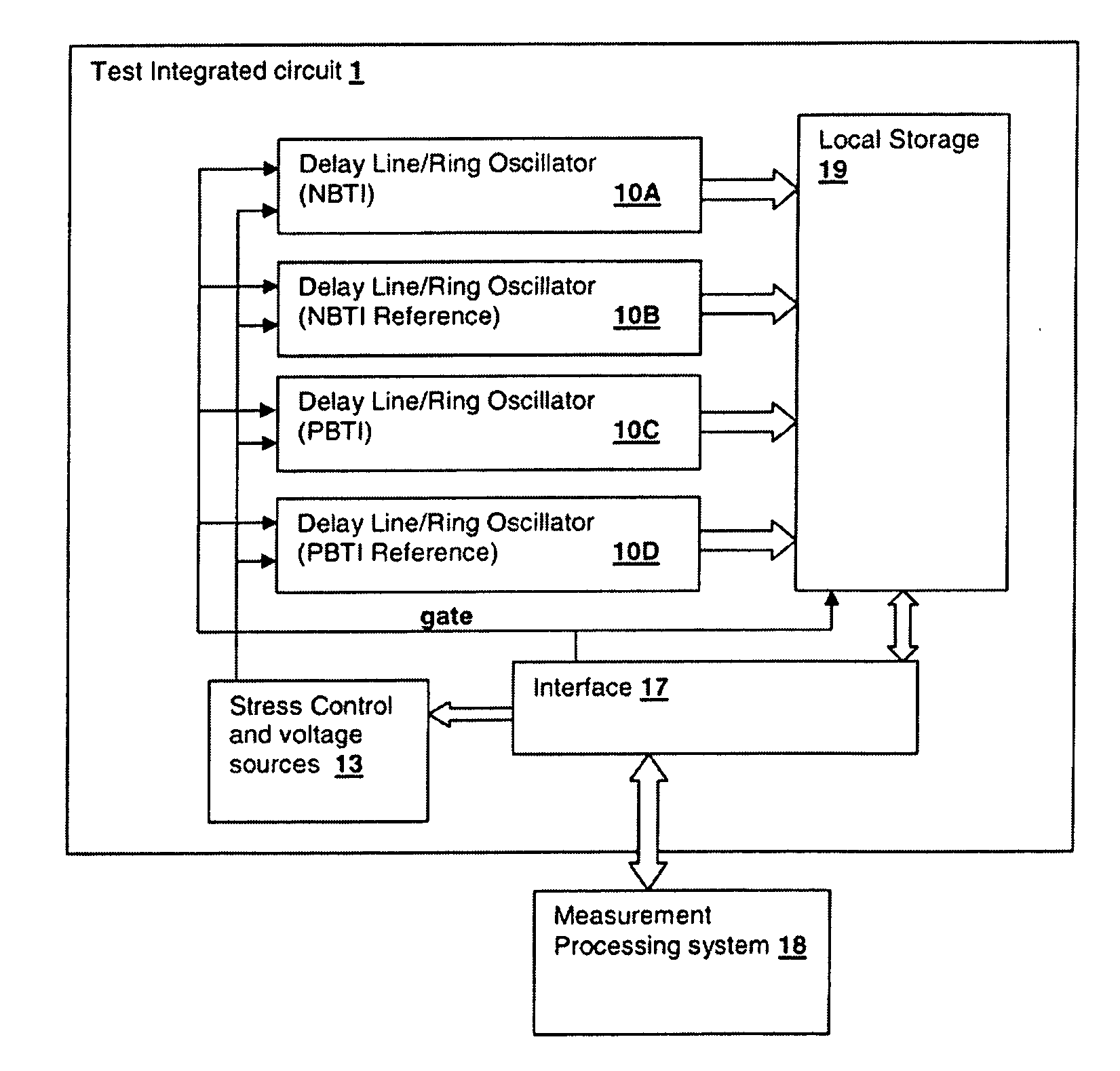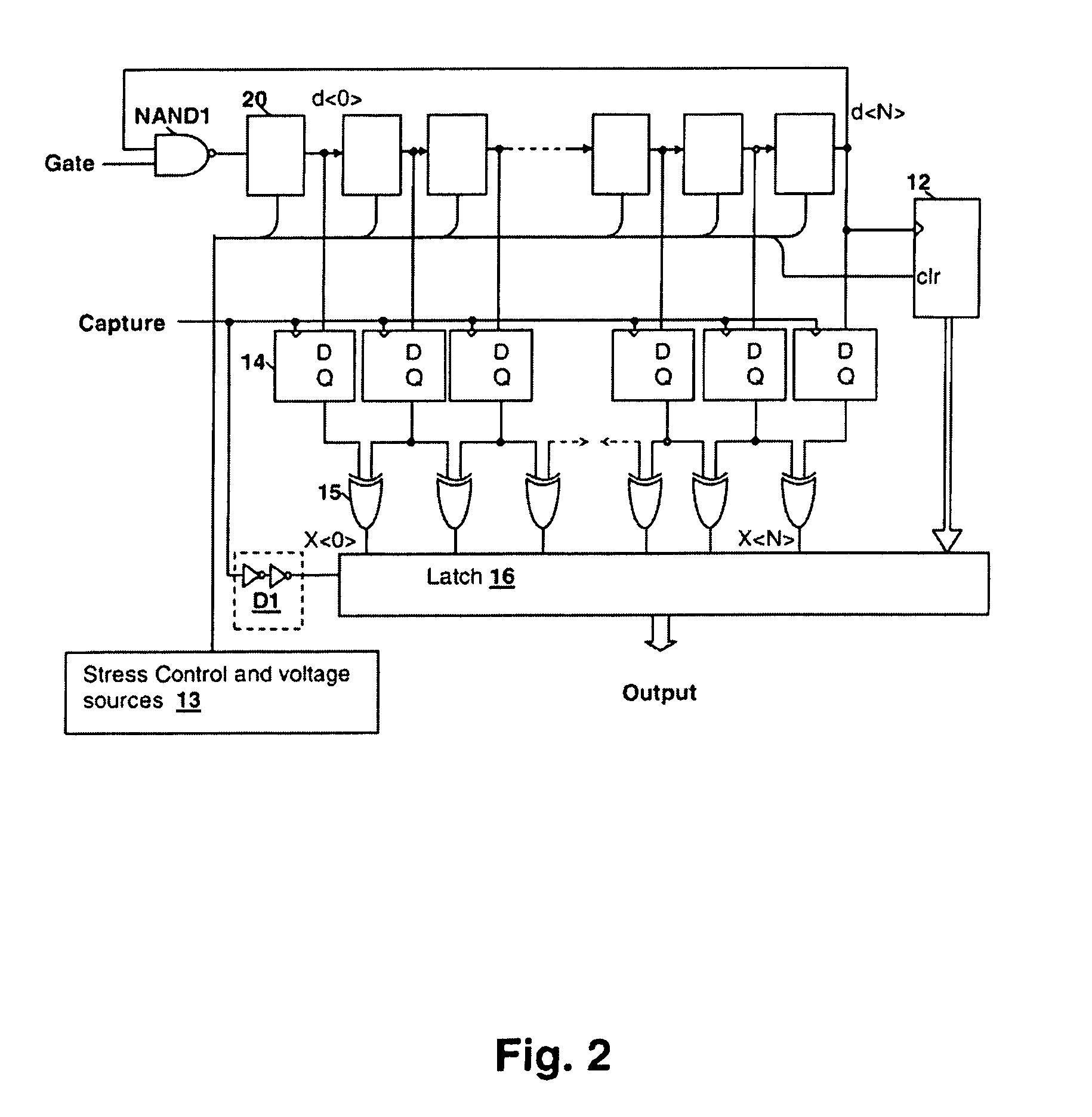Delay-Based Bias Temperature Instability Recovery Measurements for Characterizing Stress Degradation and Recovery
a temperature instability recovery and delay-based technology, applied in the field of delay-based techniques for characterizing the effects of temperature instability, can solve the problems of time and stress dependent performance changes, the measurement of their effects is limited, and the behind nbti and pbti, referred to generally as bias temperature instability (bti), are not fully understood, etc., to achieve the effect of increasing the resolution of a ring oscillator frequency measurement, speeding up, and expanding the dynamic rang
- Summary
- Abstract
- Description
- Claims
- Application Information
AI Technical Summary
Benefits of technology
Problems solved by technology
Method used
Image
Examples
Embodiment Construction
[0024]The present invention relates to test circuits and methodologies for measuring time-variant effects on threshold voltage due to stress. In particular, the present invention provides a measurement of NBTI and PBTI in the nanosecond range in order to avoid unwanted recovery from affecting the measurements, and so that repetitive measurements of device threshold voltage can be made as the devices recover from either DC or AC stress conditions, in which sequential measurements can be performed on the order of a microsecond. By taking the measurements at intervals in the nanosecond range, BTI effects accumulate in the stressed devices without substantial unwanted recovery, permitting simulation of longer aging periods in a short test interval. In a quasi-continuous stress mode, stress is applied to devices and is only interrupted during measurement periods, which are performed in a very short interval. Due to the power-law nature of the threshold voltage degradation, measurements c...
PUM
| Property | Measurement | Unit |
|---|---|---|
| threshold voltage | aaaaa | aaaaa |
| voltage stress-induced bias temperature | aaaaa | aaaaa |
| bias temperature | aaaaa | aaaaa |
Abstract
Description
Claims
Application Information
 Login to View More
Login to View More - R&D
- Intellectual Property
- Life Sciences
- Materials
- Tech Scout
- Unparalleled Data Quality
- Higher Quality Content
- 60% Fewer Hallucinations
Browse by: Latest US Patents, China's latest patents, Technical Efficacy Thesaurus, Application Domain, Technology Topic, Popular Technical Reports.
© 2025 PatSnap. All rights reserved.Legal|Privacy policy|Modern Slavery Act Transparency Statement|Sitemap|About US| Contact US: help@patsnap.com



